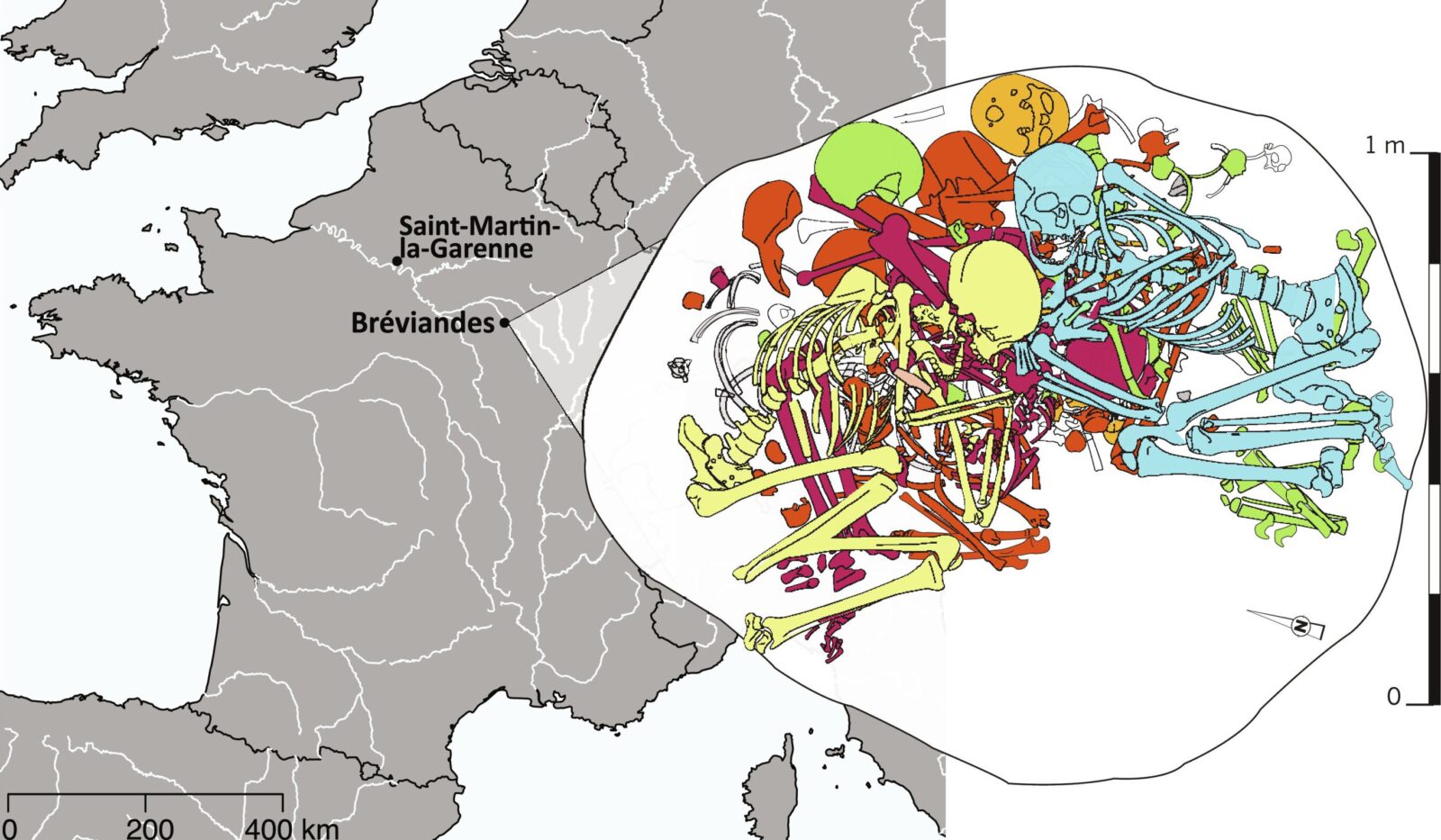
In a groundbreaking study published in the journal Science Advances, researchers from Institut Jacques Monod explore the genetic heritage of ancient Europeans, uncovering crucial insights into millennia-old migration events that have shaped modern populations. The study reveals that Anatolian genes represent a significant third component of contemporary European genomes.
Central to the research is a 4,500-year-old mass grave near France's Troyes, where scientists meticulously analyzed the genomes of seven individuals. Among them are a woman over 60 years old, her descendants, and unrelated individuals buried together, revealing a complex genetic legacy.
The genetic makeup of these individuals dates back to ancient epochs. Scientific research shows that approximately 8,000 years ago, Neolithic farmers from Anatolia and the Aegean migrated into Europe, bringing with them agricultural practices and animal domestication. These farmers intermixed with local hunter-gatherer groups, profoundly shaping early European genetic landscapes.
Between 5,000 and 4,000 years ago, a second major migration wave swept across Europe as nomadic groups from the Pontic steppes north of the Black Sea migrated westward, leaving distinct genetic markers that became foundational to the European genome.
Archaeological evidence indicates that around 4,900 years ago, there was a merging of steppe nomads and Neolithic farmers, resulting in the emergence of the Corded Ware culture, characterized by its distinctive corded ceramics.
Subsequent migrations around 4,550 years ago introduced the Bell Beaker culture, recognized for its bell-shaped pottery, which spread widely across Europe, influencing local genetic profiles. The interaction between indigenous populations and migrants from the steppe regions underscores the dynamic evolution of genetic diversity among modern Europeans.

The Bréviandes grave offers a unique glimpse into ancient community practices. Instead of familial burials, the grave may have hosted individuals with diverse genetic backgrounds, suggesting a communal or ceremonial burial.
Genetic analysis highlights regional interactions during the Final Neolithic period, revealing maternal lineage origins from southern France and southwestern Europe.
Today, the European genome carries traces of these ancient migrations and interbreeding events. The genetic structure of modern Europeans reflects the complexity of migrations and mating events that occurred thousands of years ago. While the Neolithic contribution is fundamental, steppe-origin genetic contributions are more pronounced in northern Europe.
These changes over approximately 10,000 years have significantly shaped Europe's genetic makeup, with Anatolian and Pontic genes forming the third major component of modern Europeans' genomes.
Advanced genetic analysis and archaeological findings paint a vivid picture of Europe's genetic evolution.
By deepening our understanding of human history, this study underscores the importance of genetic research in explaining the complexity of human heritage.
This interdisciplinary approach not only enhances our knowledge of European origins but also plays a critical role in unraveling the broader complexities of human history.